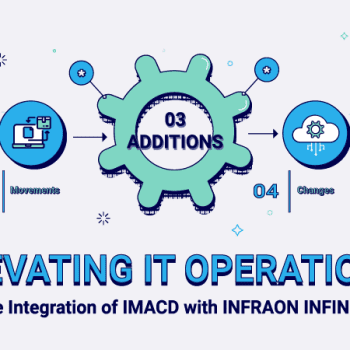Open source asset management software gives businesses the power to track, monitor, and manage physical and digital assets through customizable code. Teams can download, modify, and deploy the system on their own servers or cloud platforms without depending on a proprietary vendor.
Open source asset management can be appealing to IT, facilities, and finance teams that want full visibility across hardware, software, and fixed assets. It supports functions such as inventory tracking, license monitoring, lifecycle control, and maintenance scheduling.
Advantages of Open Source Asset Management Software
Lower licensing costs and budget control
Open source asset management software removes recurring licensing fees that come with commercial systems. Businesses can redirect that money toward configuration, maintenance, or integration. Once deployed, ownership stays with the organization, giving finance teams predictable cost management.
Freedom to customize the code
Since the codebase is open, internal developers can shape dashboards, workflows, and reporting structures to match organizational needs. For instance, open source asset tracking software lets users modify modules for specific asset categories, departmental views, or hardware types.
Active community collaboration
A strong open-source community contributes bug fixes, modules, and documentation. Teams using open source fixed asset management software benefit from shared knowledge and regular updates across platforms. That community-driven growth cycle keeps systems stable and adaptable to new demands.
Independence from vendor restrictions
Open source asset management software helps organizations retain full control over their roadmap. They can scale deployments, change hosting models, or migrate data without waiting for vendor approvals. The autonomy is valuable for businesses operating under tight compliance rules or internal security standards.
Flexibility across use cases
From IT equipment and software licenses to real estate and heavy machinery, open source fixed asset management software can handle multiple asset types. It suits small businesses managing local inventories as well as enterprises with distributed facilities that need flexible control.
Rapid proof-of-concept testing
Open-source tools can be deployed quickly to validate asset workflows before a full-scale rollout. IT teams can test synchronization, reporting, and tracking functions on smaller datasets, then expand the model to other departments once it proves stable.
Disadvantages of Open Source Asset Management Software
Dependence on in-house expertise
Deploying and maintaining open source asset management software requires skilled internal resources. Without a capable technical team, system updates, integrations, and data protection may fall behind schedule. The quality of results depends on your team’s ability to maintain and evolve the platform.
Limited formal support
Most open source asset tracking software relies on community channels rather than dedicated vendor support. While documentation and user forums exist, immediate assistance is not guaranteed. It can cause longer resolution times when handling complex issues.
Higher implementation time
Customization requires time, planning, and testing. Building workflows, connecting APIs, and aligning data models to existing systems can stretch internal timelines. For large-scale projects, this stage may consume the same effort as purchasing a paid solution.
Missing enterprise-grade features
While open source fixed asset management software offers core functionality, it may lack advanced analytics, predictive reporting, or deep AI integrations common in enterprise systems. Those features often require manual configuration or third-party plug-ins.
Security and compliance maintenance
Security responsibility sits entirely within the organization. Open access to the codebase demands rigorous version control, regular patching, and compliance monitoring. A neglected setup can introduce vulnerabilities that would otherwise be managed through vendor updates.
Performance scaling challenges
When asset data grows across multiple facilities or divisions, some open-source systems struggle with scaling. Database tuning, caching, and cluster optimization must be handled internally. That increases complexity for organizations with large distributed inventories.
Popular Use Cases of Open Source Asset Management Software
IT hardware and software lifecycle tracking
Many IT departments use open source asset management software to monitor laptops, desktops, mobile devices, and software licenses. The system supports barcode scanning, assignment tracking, and decommissioning, making lifecycle visibility more accurate.
Physical and fixed asset oversight
Manufacturing plants, logistics firms, and facility managers benefit from open source fixed asset management software to manage heavy equipment, property, and maintenance schedules. It helps track depreciation, service history, and warranty data under one system.
Data center and network inventory
Open source asset tracking software helps operations teams visualize servers, switches, and power units in a structured database. It assists with resource mapping, network capacity planning, and preventive replacement cycles.
Distributed sites and hybrid environments
Organizations with multiple branches or hybrid environments can deploy open source asset management software on local servers while maintaining global synchronization. It ensures each site has visibility into asset usage while corporate teams manage aggregate reporting.
When To Reconsider Open Source Asset Management Software
Insufficient technical support
If your organization lacks dedicated IT or DevOps staff to handle deployment and upkeep, managing open-source code internally can become difficult. Commercial systems often provide guaranteed support and onboarding assistance.
Need for advanced analytics and automation
If predictive maintenance, AI-driven forecasting, or automated compliance checks are critical, open-source solutions may require heavy customization. Commercial systems might deliver those functions ready to use.
Regulatory pressure and certification needs
Industries like healthcare, finance, and manufacturing operate under strict compliance rules. They may require software with certified audit trails, data retention protocols, and service guarantees. Open source tools might not align with those requirements out of the box.
Rapid scaling expectations
If your deployment involves thousands of assets across multiple global sites, open-source systems might demand extended configuration before reaching performance benchmarks expected in large-scale environments.
Pros and Cons of Open Source Asset Management Software
| Pros | What It Means | Cons | What It Means |
| No recurring license cost | You save on annual fees since open-source tools are free to use and modify. | Requires skilled technical staff | Needs internal developers and admins to manage updates, code, and maintenance. |
| Full ownership and custom control | You decide how the system runs, what features to add, and where it’s hosted. | Limited formal support options | Community support replaces vendor support, which may delay fixes. |
| Active open-source community involvement | Developers worldwide improve the tool, share fixes, and create plugins. | Extended customization cycles | Tailoring workflows and integrations takes longer without vendor tools. |
| High flexibility for use cases | Works for IT, hardware, and fixed assets across different industries. | Missing built-in enterprise analytics | Lacks native AI, automation, or reporting seen in commercial suites. |
| Independent deployment and scaling choices | You can host on-premises or in the cloud, scaling as needed. | Responsibility for security and governance | You handle data protection, patching, and compliance checks internally. |
8 Factors for Selecting Open Source Asset Management Software
- Identify asset categories to be tracked, such as IT hardware, infrastructure, or property
- Review the community’s responsiveness, update frequency, and documentation quality
- Confirm integration options with existing systems like ERP, CRM, or help desks
- Evaluate reporting capabilities and lifecycle management modules
- Check how data security and access controls are handled
- Estimate long-term internal resource requirements
- Create a governance plan for version control and patch management
- Test compatibility across devices, databases, and APIs
Conclusion
Open source asset management software gives organizations full control over asset tracking, cost structure, and deployment flexibility. It empowers teams that have the internal talent to configure, manage, and maintain their own system. However, it demands consistent oversight, disciplined governance, and long-term resource planning.
The right choice depends on how much freedom and responsibility your business is ready to manage internally.
Infraon Assets for Unified Asset Lifecycle Management
Infraon Assets is an AI-powered asset management software that helps organizations gain complete visibility and control over hardware, software, and fixed assets. The software helps enterprises centralize asset tracking, monitoring, and optimization across multiple locations. With AI-driven insights and configurable workflows, Infraon Assets improves utilization, strengthens governance, and keeps audits transparent.
Looking to modernize how you manage enterprise assets? Please write to marketing@infraon.io and see Infraon Assets in action.
FAQs
Q1: What is the difference between open source asset management software and open source asset tracking software?
Open source asset management software covers the full lifecycle of assets, including procurement, assignment, maintenance, depreciation, disposal, whereas open source asset tracking software emphasizes inventorying and monitoring where assets are, how they move, and their status. They overlap but tracking is a subset of full management.
Q2: Can open source fixed asset management software handle depreciation and disposal?
Yes. Some solutions labeled as open source fixed asset management software include modules for depreciation, allocation of costs, and disposal workflows. The key is verifying these features in the specific tool before deployment.
Q3: Are there free open-source asset management software tools for small businesses?
Yes. Small organizations can deploy open source asset management software at zero license cost, which is viable especially if their asset volume is manageable and internal support exists. For example, Snipe-IT is cited as free and open source.
Q4: What are the risks of deploying open source asset management software?
Risks include insufficient internal skills to manage the system, lack of timely patching or upgrades, insufficient governance over customizations, and potential performance issues as asset volume grows.
Q5: When does open source asset tracking software cease being the right choice?
When the organization requires certified vendor support, rapid enterprise-scale rollout with minimal internal cost, advanced analytics out-of-the-box, or tight integration with hardware vendor ecosystems, it may be more efficient to select a commercial solution rather than extend open source asset tracking software.

















